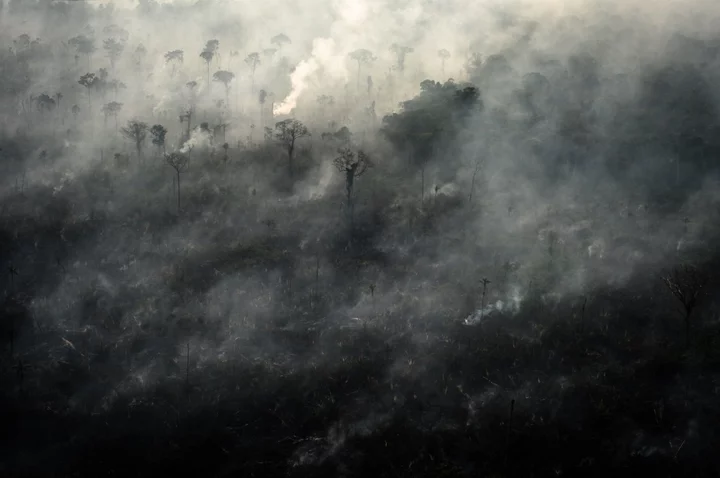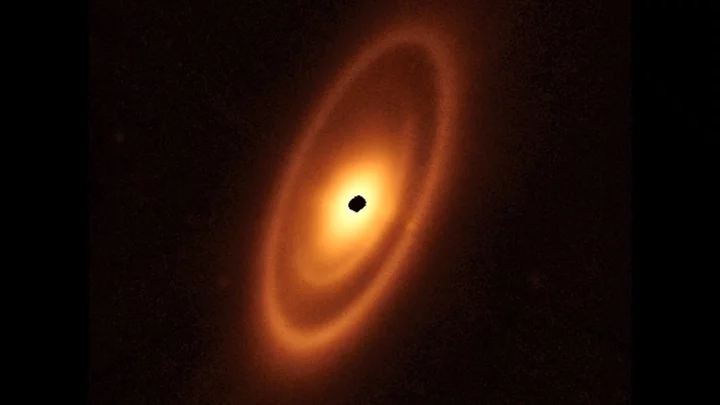A team of Earth scientists first introduced the concept “planetary boundaries” almost 15 years ago to identify major Earth systems that were at risk of instability because of human activity. They looked at systems including the climate, biodiversity and fresh water to determine the limits of what they called a “safe operating space” for civilization. But they stopped short of analyzing how busting past these limits might harm people, particularly the poor and vulnerable.
A major update, published today in the journal Nature, does just that, describing just how much punishment nature can absorb before turning on us. Seven of the eight global boundaries have already been surpassed by humans, the authors find.
The researchers offer their new work in the hope that business and governments will develop tools to align their practices with science-set thresholds.
“We simply need to have science-based targets well beyond climate for all the planetary boundaries, in order to have a stable and resilient Earth system — and also to handle the climate crisis,” said Johan Rockström, director of the Potsdam Institute for Climate Impact Research in Germany and a co-author of the new and original works.
The new analysis also includes criteria for justice, along three dimensions — affecting the many millions of people at risk today, the billions coming in the future and for the world’s countless species and ecosystems.
Read more: Global Warming Is Outrunning Efforts to Protect Human Life, Scientists Warn
For some Earth systems, like the climate, this fairness analysis requires more stringent limits than geophysical-stability factors alone would. The 1.5C warming limit enshrined in the Paris Agreement, already on life support, is too high given humanitarian concerns, the authors write, evidenced by tens of millions of people now exposed to dangerous heat.
The world has warmed 1.2C since industrialization. By 1.5C, the scientists find, more than 200 million people — mostly poor, vulnerable and marginalized communities — can be expected to face unprecedented heat. Shrinking the global average temperature increase below 1C is their target, but because that’s not possible on a visible time scale, countries will have to deal with the consequences. And that means “adaptations and compensations to reduce sensitivity to harm and vulnerability will be necessary.” The authors call for international compensation for poorer countries’ climate-related “loss and damage,” as agreed to at last year’s UN climate talks.
The scale of effort required to meet these challenges is unprecedented. “Nothing less than a just global transformation across all ESBs [Earth system boundaries] is required to ensure human well-being,” they write. Energy, food, cities and other sectors require rebooted politics, economics and technology. “It requires a leap in our understanding of how justice, economics, technology and global cooperation can be furthered in the service of a safe and just future.”
The 51 authors are associated with the Earth Commission, a group of natural and social scientists co-founded by Rockström to generate science that can inform organizations, such as the Science Based Targets Network, that develop guidance for companies and cities. The paper strives to quantify planet-scale changes that “are mostly driven by social and economic systems run on unsustainable resource extraction and consumption.”
The new work builds not only on previous planetary-boundaries research, but other assessments of social vulnerability to systemic change, including the UN Sustainable Development Goals. A key breakthrough in this paper, the authors write, is the translation of social justice considerations into the same units of measurement as the Earth systems, such as degrees Celsius for temperature or cubic kilometers for water use.
For instance, nitrogen and phosphorus from farms spill into waterways and cause oxygen-less “dead zones” in rivers and seas, with consequences for drinking water too in some areas. The global limit for excessive nitrogen is 119 million metric tons a year and 10 million for phosphorus, according to the paper.
To address air pollution, the targets the scientists set are to minimize the difference in the concentration of aerosols between the Northern and Southern Hemispheres, and an upper bound for harmful small particle pollution. Aerosols from both natural and human sources, from volcanoes to tailpipes, cause illness and premature death around the world.
They also suggest two biodiversity metrics to limit the destruction of species and ecosystems. The first defines the fraction of natural ecosystems that should be preserved: 50% to 60%, higher than the status quo of 45% to 50%. To make sure human-touched areas continue to perform key roles, the authors say 20% to 25% of every square kilometer of urban, agricultural and other land altered by people should retain elements of natural ecosystems. To prevent freshwater biodiversity loss, the scientists recommend that rivers and streams deviate no more than 20% from natural monthly flows.
The focus on the human toll of a changing planet helps make the new analysis more concrete than previous iterations of planetary boundaries research, said Kim Cobb, who is director of the Institute at Brown University for Environment and Society and was not involved with the study. While there may still be scientific uncertainties about elements of these systems, “we don’t really have any uncertainties about the disproportionate impacts of climate change on the most vulnerable,” she said. “And so that’s something that I think should ground us in decision-making today.”
Essentially, the authors are trying to do for all of the Earth system what’s already happened for climate change: Generate scientific baselines that standard-setting organizations and governments can use to help companies, cities and others ensure their operations don’t contribute to further systemic environmental change or human harm. The boundaries may include, but are not the same as “tipping points,” or thresholds beyond which the planet perpetuates change with or without human input.
“The ultimate definition of justice today is the right of every human being, particularly future generations, to have a stable planet — to be born on a planet which is at least as livable as the planet where his or her parents were born,” Rockström said.
(Updated with further details on thresholds set by scientists and comments by Kim Cobb.)









